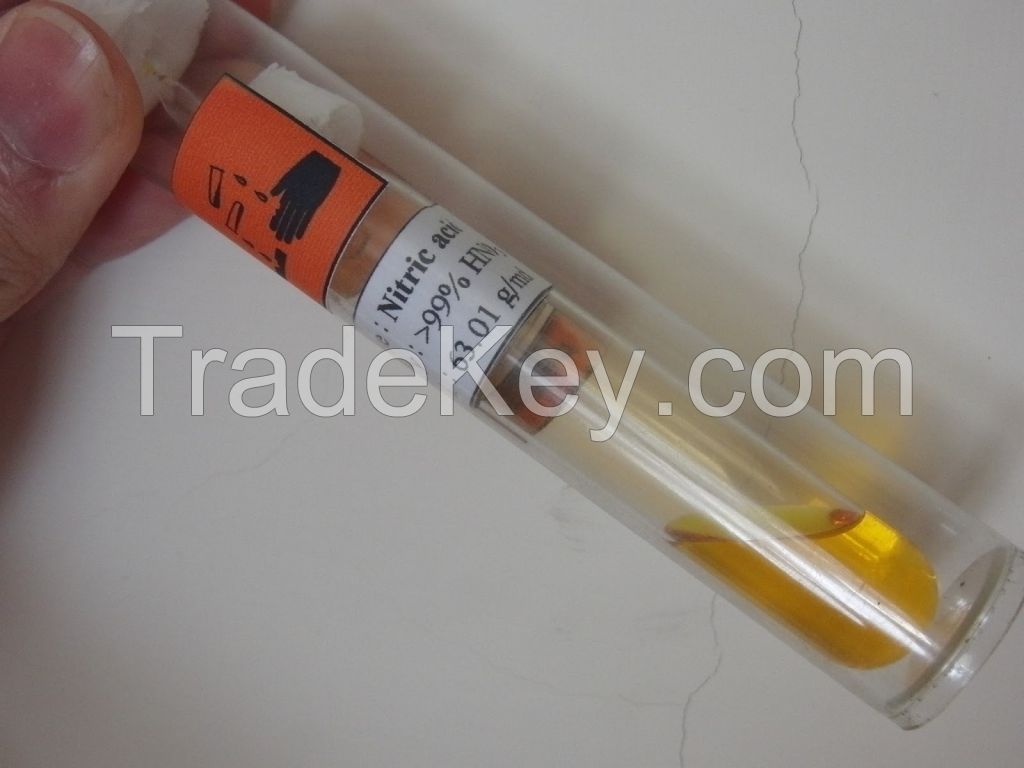详情
Nitric acid belongs to the group of inorganic acids. It is both
extremely corrosive and toxic. Consequently, direct contact can
result in severe burns. Nitric acid is colorless when pure but has
a yellowish appearance when it is old due to the collection of
nitrogen oxides. Upon distillation, nitric acid in its pure form
begins to boil at *8.2°C and becomes solid when it is well
cooled.
Nitric acid is a strong oxidizing agent. It ionizes readily in
solution, forming a good conductor of electricity. It reacts with
metals, oxides, and hydroxides, forming nitrate salts.
Chief uses of nitric acid are in the preparation of fertilizers,
e.g., ammonium nitrate, and explosives, e.g., nitroglycerin and
trinitrotoluene (TNT). It is also used in the manufacture of
chemicals, e.g., in making dyes, and in metallurgy, ore flotation,
etching steel, photoengraving, and reprocessing of spent nuclear
fuel.
Nitric Acid (HN*3) % by wt. min.
*9
Sulphuric Acid (H2SO4) % by wt. max.
0.2
Nitrous Acid (HN*2) % by wt. max.
0.*2
Chloride as Cl % by wt. max.
0.*1
